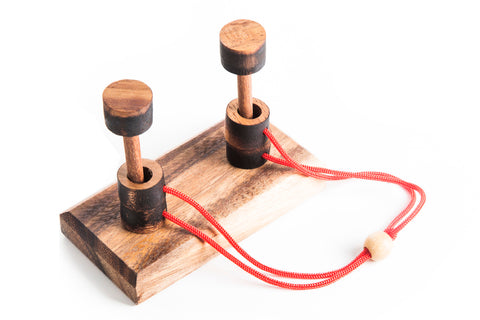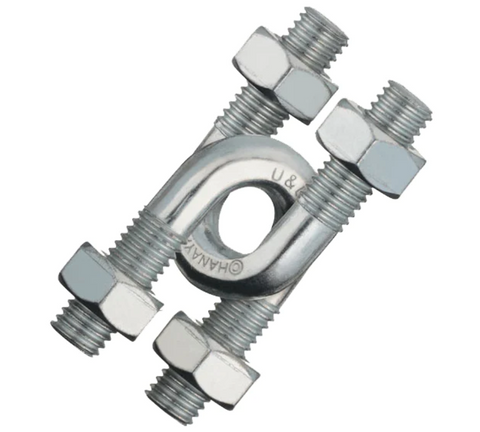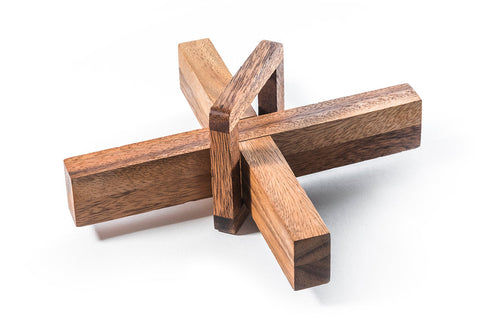Let's talk today about the classics! Like they say, there's nothing like a good old-fashioned wooden puzzle! Is that right? But hold on a second, what about those awesome metal puzzles? Don't get me wrong, wooden puzzles are fantastic, but some serious puzzlers (you know who you are!) might argue otherwise. And that's the beauty of puzzles – there's a space for everyone. We all know the satisfying click of a puzzle piece slotting into place is a sound that resonates with puzzlers everywhere. But when it comes to the most difficult puzzles (like the one that has been lying on my desk for weeks now), metal vs wood – the debate rages on! This isn't just about difficulty, though. Metal and wood offer totally different puzzling experiences. But when it comes to choosing the right puzzle for your next brain teaser adventure, the options can be overwhelming. Two prominent materials, metal and wood, offer distinct experiences that cater to different strengths and preferences. In this blog post, I'll try to crack open that debate and dive into the world of crazy difficult metal puzzles and intricate 3D wooden puzzles, helping you pick the perfect opponent for your next puzzling quest.
Clash of the Titans: Mental Muscles Engaged!
Both metal and wooden puzzles present a formidable challenge, but they engage different cognitive skills.
- Metal Puzzles: Champions of Logic and Mechanics
Metal puzzles are the undisputed masters of intricate mechanisms and hidden sequences. They often involve disassembling a complex interlocking structure or separating meticulously linked pieces. Success in these puzzles hinges on your ability to think analytically and employ a step-by-step approach. As you manipulate the pieces, you'll need to decipher the hidden logic behind their connections and movements. Metal puzzles are essentially brain teasers encased in a metallic shell, demanding sharp logic and a knack for problem-solving.
Example: Hanayama Cast Puzzles are renowned for their ingenious locking mechanisms that require a combination of logic and dexterity to solve.
- Wooden Puzzles: Masters of Spatial Reasoning
3D wooden puzzles, on the other hand, present a challenge for your spatial visualization skills. Imagine mental origami! These puzzles require you to translate a 2D blueprint into a magnificent 3D creation. As you analyze the shapes and connections between the pieces, you'll need to visualize how they fit together to form the final structure. This process demands strong spatial reasoning abilities, allowing you to mentally rotate and manipulate the pieces in 3D space.
Example: Kubiya Interlocking Puzzles offers intricate wooden puzzles that depict iconic geometric and figural shapes, challenging you to put together stunning 3D models.

A Matter of Scale: Big Pieces vs. Small Wonders
The size of the puzzle pieces also plays a significant role in the overall experience.
- Metal Puzzles: Fiddly Delights with High Complexity
Metal puzzles typically feature smaller pieces compared to their wooden counterparts. While this compact size allows for incredibly intricate designs with numerous interlocking mechanisms, it can also make them fiddly to manipulate. This requires greater dexterity and patience, especially for those with larger fingers. However, the satisfaction of finally deciphering the intricate movements within a small metal puzzle is unparalleled.
- Wooden Puzzles: Easier Handling, Greater Focus on Visualization
Wooden puzzles generally boast larger pieces, making them easier to hold and manipulate. This can be particularly beneficial for beginners or those who find intricate metal pieces challenging. However, the complexity in wooden puzzles lies in visualizing the final 3D structure from the flat pieces. While the handling might be easier, the mental challenge of spatial reasoning remains demanding.
The Thrill of Victory: The Difficulty Divide
Both metal and wooden puzzles come in a variety of difficulty levels, catering to a range of puzzlers. However, there's a general trend in their difficulty ceilings:
- Metal Puzzles: Pushing the Limits of Logic
Metal puzzles, due to the intricate mechanisms that can be incorporated into their design, often have a higher difficulty ceiling. They can range from beginner-friendly puzzles with straightforward disassembly challenges to mind-boggling contraptions that require advanced problem-solving skills and critical thinking. The satisfaction of finally cracking the code of a complex metal puzzle is truly rewarding.
Example: Puzzles from manufacturer Hanayama offer a range of difficulty levels, with some puzzles like the "Cast Marble" and "Cast Vortex" pushing the boundaries of logic and requiring advanced techniques to solve.
- Wooden Puzzles: A Spectrum of Spatial Challenges
The difficulty of 3D wooden puzzles can vary greatly depending on the complexity of the design and the number of pieces. While some beginner puzzles might focus on simple shapes and smaller piece counts, advanced wooden puzzles can feature hundreds of intricate pieces that require meticulous attention to detail and strong spatial reasoning skills.
Example: Wooden puzzle brand Kubiya Games offers puzzles of varying complexity, with some like their "Kumiki Japanese Puzzles" or their "Wooden Burr Puzzle collection" puzzles providing a significant challenge for experienced puzzlers due to their intricate designs and high piece counts.
Who Should Choose Which? Matching Puzzles to Personalities
Now that you understand the core differences between metal and wooden puzzles, it's time to find the perfect match for your puzzling personality!
- Love Logic Puzzles? Go Metal!
If you find yourself drawn to logic puzzles and enjoy the satisfaction of unraveling hidden mechanisms, then metal puzzles are your calling. The analytical approach and step-by-step problem-solving required to conquer a metal puzzle will keep your mind engaged and leave you feeling triumphant upon cracking the code.
- Embrace the Spatial Challenge? Wood is for You!
Do you enjoy visualizing 3D structures and translating flat pieces into stunning creations? Then 3D wooden puzzles will ignite your passion. The challenge of manipulating pieces in your mind's eye to form the final structure will test your spatial reasoning skills and provide a sense of accomplishment when you see your creation come to life.
Popular Puzzle Brands:
Metal Puzzles:
- Hanayama Cast Puzzles - Renowned for their ingenious locking mechanisms and a range of difficulty levels.
- Felix Ure Puzzles - Offers a wide variety of premium metal puzzles including Sequential Discovery Puzzles, disentanglement puzzles, and logic puzzles.
- William Strijbos Puzzles - Known for his intricate and visually stunning metal puzzles.
Wooden Puzzles:
- Kubiya Puzzles - Specializes in intricate wooden puzzles including Japanese Kumiki puzzles, puzzle boxes, and wooden jigsaw puzzles.
- Karakuri Puzzle Boxes - Specializes in beautiful and complex wooden puzzle boxes with varying difficulty levels, including challenging 3D puzzle kites.
- Jean Claude Constantin Puzzles - Offers a variety of wooden puzzles with moving gears and mechanisms.
- Siebenstein Spiele Puzzles - Offers a variety of maze puzzles and puzzle boxes with unique mechanisms.
So, are you ready to embark on your next puzzling adventure? Whether you're drawn to the intricate mechanisms of metal puzzles or the spatial challenge of 3D wooden creations, there's a perfect puzzle waiting for you. Share your favorite type of puzzle and your go-to brands in the comments below! Let's ignite a discussion about the joys of puzzling and inspire each other with new challenges.
Let us know which type of puzzle you find most appealing and why. Share your favorite puzzle and brand.
As always, happy puzzling!






